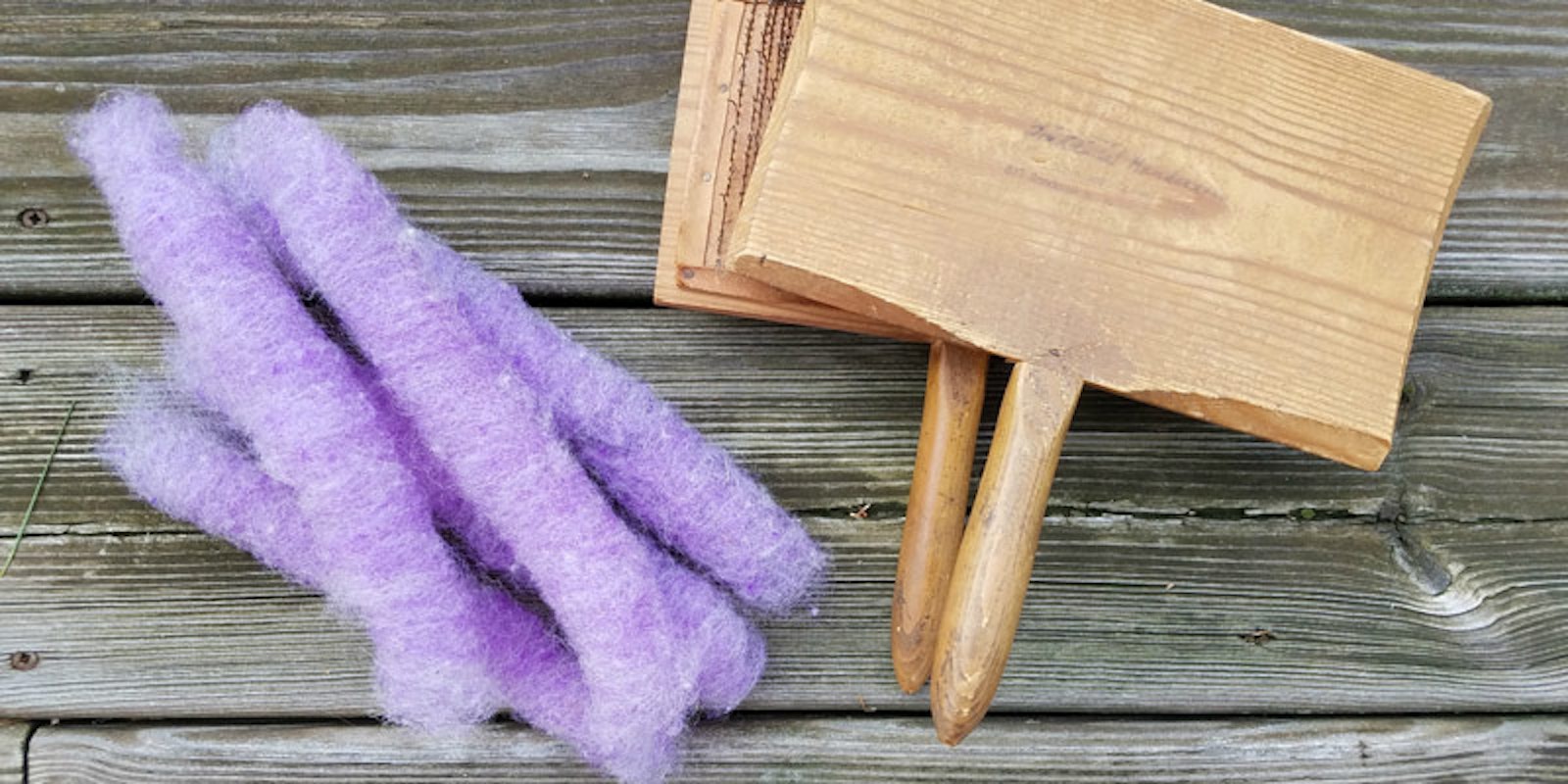Andrea Mielke Schroer is an uncommon spinner: she loves handcards and the process of carding wool. She’s taught us handcarding techniques in the video How to Card Wool, but today she answers the big question: Why?
Are you a process person?
Not everyone is—I am a process person, while my sister and best friend is a product person. Her goal is the finished object. She is not content until she gets there. Since I am a process person, I am completely content in the doing of the thing. A finished object at the end is a bonus, but not a requirement. The world needs both types of people.
Not surprisingly, though, as a “process” person, I love handcarding.
Handcarding is full of delights.
I love playing with the fiber—usually wool—and I love working with a well-made tool. I love the soft, swishy sound of the fibers being brushed out. I love the feel of the warm wooden handles of the hand carders in my palms. I am delighted by the surprising amount of fine vegetable matter (VM) and dust that falls out of the locks of wool as they are opened by the carders.
I love the challenge of using movements that will smoothly open the fibers, but not fold or tangle them. I adore the way the tiny batt of fiber rolls into a delightful, airy rolag.
These joys did not happen spontaneously or without effort, though. It took days of practice to reach a point where I could open and transfer the fibers automatically, without stopping to consider which carder should move next and in which direction.
It took months of perfecting my method of washing so that the locks were not jumbled and clumped, hiding dirty tips and felted ends.
It took years of observing, and trial and error, and more trial.
Each set of handcards has its own charms.
Rome wasn’t built in a day, and neither was my handcarding ability.
But the journey has been totally worth it. Teasing out what seemed to be nuances gave me the knowledge I needed as well as the dexterity and sense that allow me to finesse rolags quickly and efficiently now. I never tire of repeating, “Practice makes progress.” You can’t improve if you don’t Do The Thing. Over and over. Thoughtfully and attentively. Again, and again.
I think even a “project” person would agree with that.
Andrea Mielke Schroer lives in central Wisconsin, where she writes, teaches, and operates Mielke’s Fiber Arts with her sister, Amy Dressel.
Originally published April 12, 2023, updated February 26, 2025.



